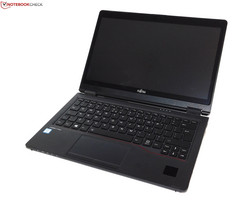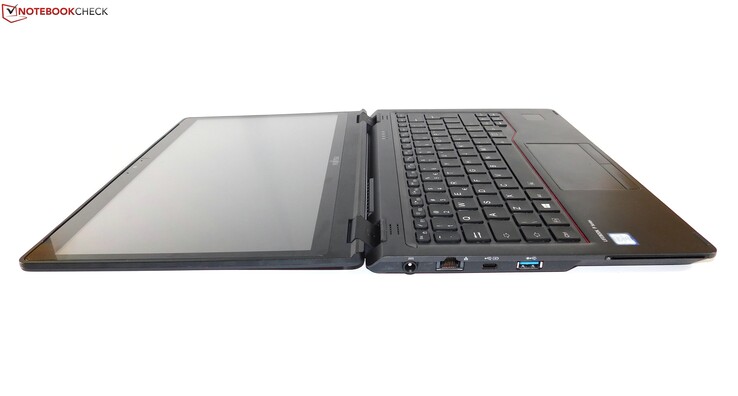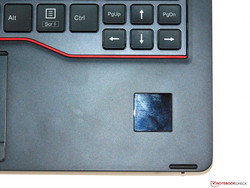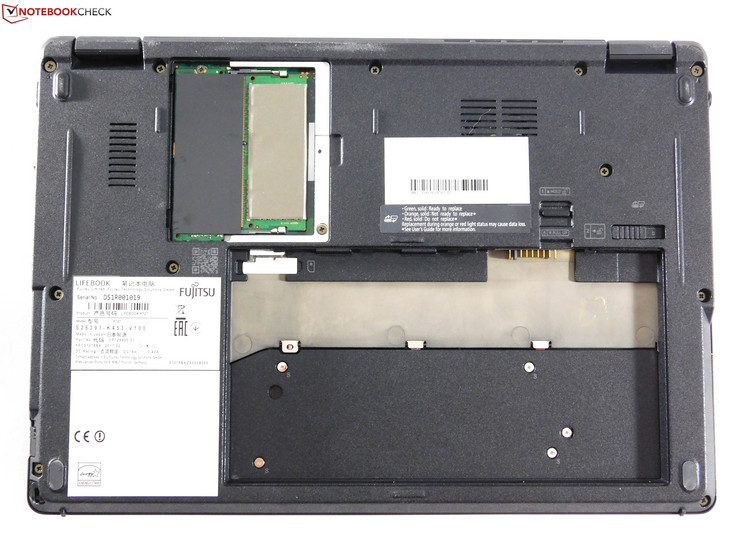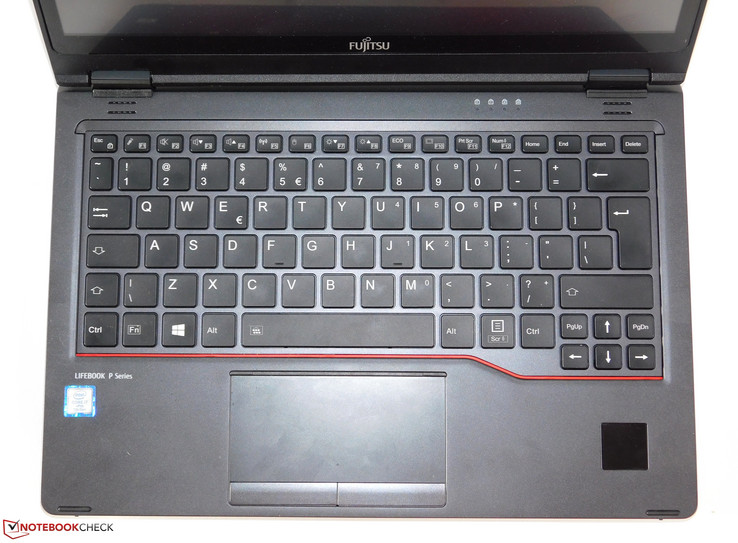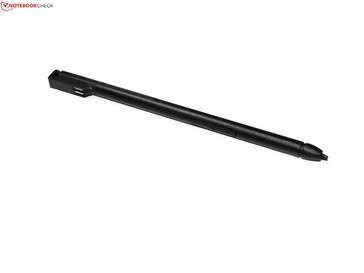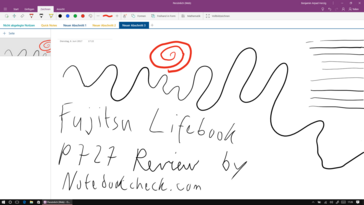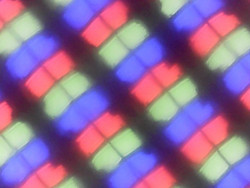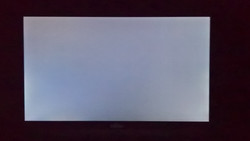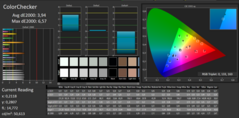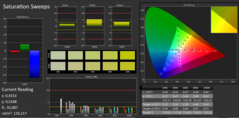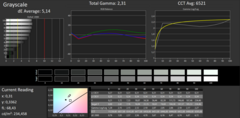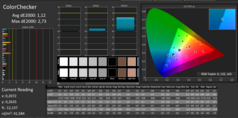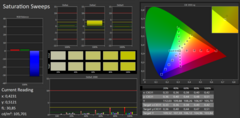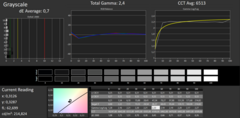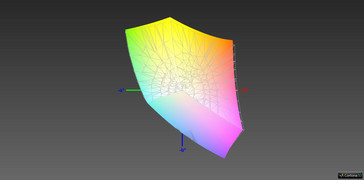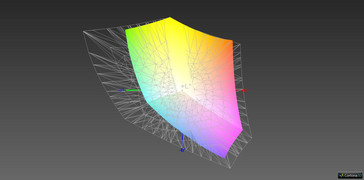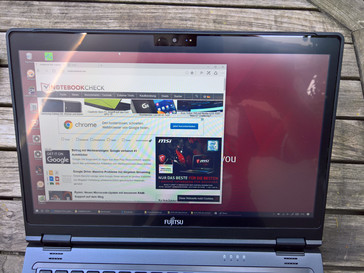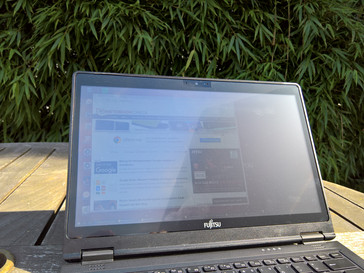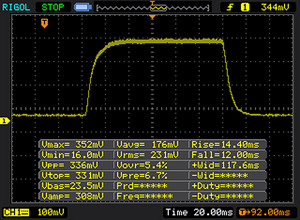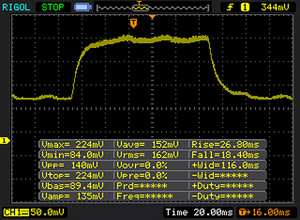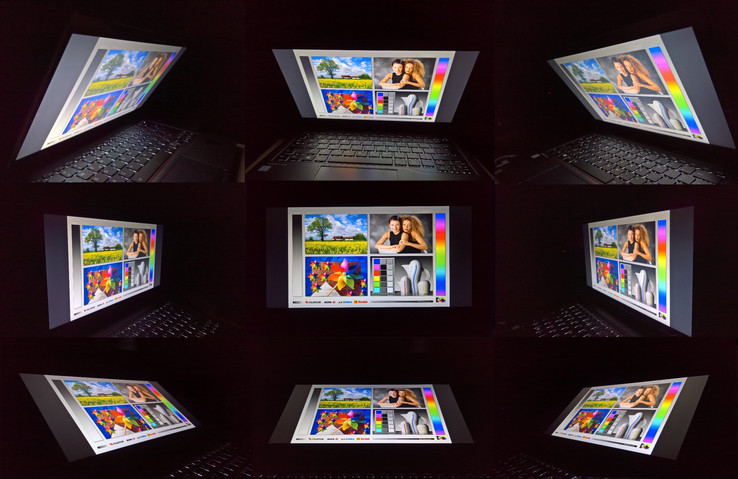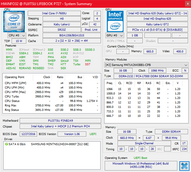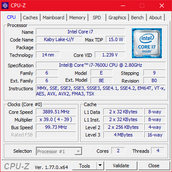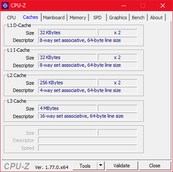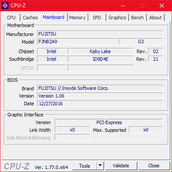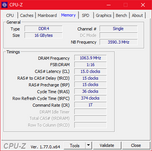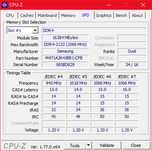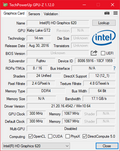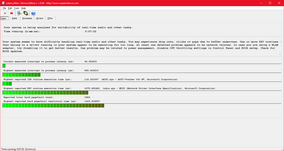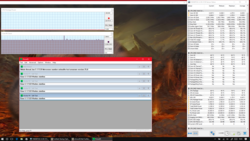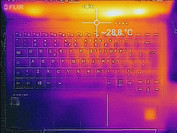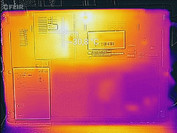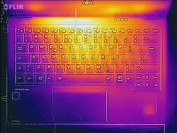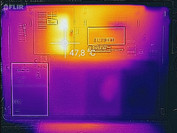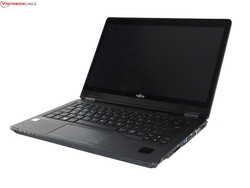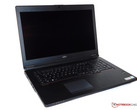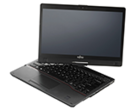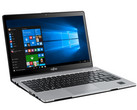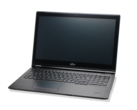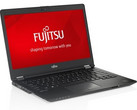Fujitsu Lifebook P727 (i7, 16 GB, LTE) Convertible Review
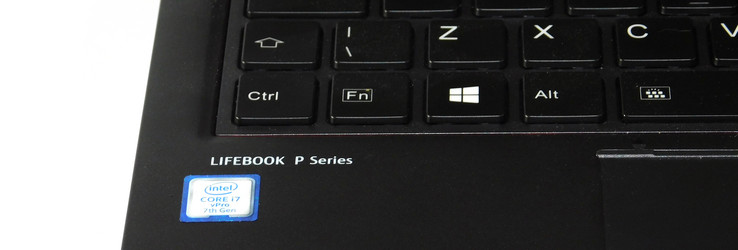
For the original German review, see here.
If a manufacturer could be referred to as “guardian of the classic convertible notebook”, it would certainly be Fujitsu. Of all the big OEMs, Fujitsu has remained faithful to the classic rotating hinges – a design that goes back as far as the first Windows XP Tablet PC Edition tablets. All other manufacturers have, sooner or later, decided to ditch this design in favor or the more practical 360 ° hinges common in convertibles today.
This doesn’t mean that Fujitsu has forsworn rotating hinges altogether. The classic rotating convertible design is still available in the Lifebook T937, but Fujitsu was unable to ignore the evolution in hinge design any longer. The P727 does not only feature new 360 ° hinges, but it is also equipped with a smaller 12.5-inch display and cheaper than the T937 to boot.
Our review unit was equipped with a Core i7 processor, a 512 GB SSD, 16 GB of RAM, and a FHD display. This particular configuration is not available everywhere. In the United States, it can be configured individually. The base model, equipped with a Core i5-7200U processor, 8 GB of RAM, a 256 GB SSD, and an HD panel sells for US $1,299. This particular model cannot be customized, a customizable less powerful model (4 GB RAM, 128 GB SSD) sells for US $1,749 but can be upgraded in pretty much every aspect. Accordingly, our review unit will cost you US $3,059. Our test group is filled with the crème de la crème of business notebook convertibles, ranging from the HP Elitebook x360 and the Lenovo ThinkPad Yoga 370 to the Dell Latitude 5289, the Lifebook T937, and the Toshiba Portégé X20W.
Case
At first glance, the P727 looks exactly like the Lifebook U747. Except for the red stripe underneath the keyboard, it is held entirely in black, and the sides on the palm rests are chamfered (for some reason, much more so on the left than the right side). The differences are subtle, and only a few tiny details reveal the P727’s true convertible nature. The power button (or rather slider) that is now located on the side is one such discreet hint. The fact, that the power button is a slider instead of a regular button, protects the user from accidental actuation when grabbing the device. Another feature that hints at the devices true capabilities is the digitizer slot next to the power slider.
The device’s design is on the only feature plagiarized from the U747: the case’s material composition is the same as well. Metal is clearly the dominant element even though this is not immediately obvious; only the palm rest feels like metal. The bottom is made of rough plastic, and the display cover is made of magnesium covered with a slick coating. The overall touch and feel is certainly premium, and the case is very rigid. This is particularly true for the base, which passed our torsion experiments with flying colors. The display cannot keep up with the base but still performed very well.
Differences between the P727 and the U747 can be found at and around the display: the former is covered by glass protecting the panel from accidental keyboard imprints and providing further rigidity and stability. Obviously, given that the P727’s display can be fully opened (360 °), the hinges are also different from the U747. Preventing bounce on a 360 ° design is all but impossible, and the P727 somewhat suffers from it in shaky environments or when using the touchscreen in laptop mode. However, it still fares comparatively well, and other devices perform much worse in this regard. The display cannot be opened one-handed.
With only 1.2 kg (2.65 lbs) the P727 is comparatively lightweight. The T937 and the ThinkPad Yoga 370 are 200 g (0.44 lbs) heavier, the devices made by Dell and HP are only slightly heavier. At 1 kg (2.2 lbs), the Toshiba Portégé X20W is much lighter than the rest of the bunch.
In return, the P727 has the smallest footprint of all the devices in our test group. Even the 12.5-inch Latitude 5289 is a bit larger. Thickness is uniform across most of the devices, at 18 – 19 mm (0.71 – 0.75 inches), the exception being the Elitebook X360 and the Portégé X20W at only 15 mm (0.59 inches).
Connectivity
The selection of available ports is certainly interesting. Our review unit was equipped with full-size Ethernet and VGA ports. No other device in our test group was equipped with either, and if available at all they require adapters. While VGA is probably useless to most home users, business users still heavily depend on it, and the fact that Fujitsu has included a full-size VGA port in a thin Ultrabook convertible case is certainly worthy of praise.
Given that the Lifebook’s USB Type-C port cannot only be used for charging but also carries a DisplayPort signal, the device is equipped with a total of three video-out ports: full-size VGA and HDMI, DisplayPort via USB Type-C. Unlike the ThinkPad Yoga 370, the HP Elitebook x360, and the Toshiba Portégé X20W, the P727 lacks Thunderbolt 3. At the end of the day it boils down to what is more important to the user: full-size VGA & Ethernet or Thunderbolt 3.
The ports are distributed more or less evenly along both sides. The front part on the left side is reserved for the smartcard reader – good placement for lefties. Unfortunately, the headphone jack is placed in the front on the right side, and thus potentially in the way when using an external mouse. In general, spacing between the ports is sufficient. Only the HDMI and one USB port are very close to each other.
SD Card Reader
SD card readers? Not necessary, at least according to Fujitsu’s competitors: not a single one of Fujitsu’s competitors features a full-size SD card reader, but some offer MicroSD card reader instead. Fujitsu somehow managed to provide us with a full-sized SD card reader on the P727.
Unfortunately, its performance when benchmarked with our Toshiba Exceria Pro SDXC 64 GB reference card was only mediocre. The more expensive T937 performed better in this test.
| SD Card Reader | |
| average JPG Copy Test (av. of 3 runs) | |
| Fujitsu Lifebook T937 | |
| Fujitsu Lifebook P727 | |
| Dell XPS 15 2017 9560 (7300HQ, Full-HD) | |
| maximum AS SSD Seq Read Test (1GB) | |
| Dell XPS 15 2017 9560 (7300HQ, Full-HD) | |
| Fujitsu Lifebook T937 | |
| Fujitsu Lifebook P727 | |
Communication
Intel’s Wireless 2x2 AC 8265 Wi-Fi chip is the indisputable standard for high-end business-class notebooks. In addition to Wi-Fi, the P727 is also equipped with Ethernet (I219-LM) and a Sierra Wireless EM7305 LTE modem.
Camera and microphone performed as expected of a business notebook: pretty bad, and only barely good enough for video chats.
| Networking | |
| iperf3 transmit AX12 | |
| Lenovo ThinkPad Yoga 370-20JJS00100 | |
| Fujitsu Lifebook P727 | |
| Dell Latitude 5289 | |
| HP EliteBook x360 1030 G2 | |
| iperf3 receive AX12 | |
| Lenovo ThinkPad Yoga 370-20JJS00100 | |
| Fujitsu Lifebook P727 | |
| HP EliteBook x360 1030 G2 | |
| Dell Latitude 5289 | |
Security
Business notebooks have a certain set of security features that are pretty much standard in this class: a smartcard reader, a Kensington lock, and a fingerprint reader. Fujitsu has equipped its P727 with the two former, but not the latter; instead, a supposedly even more secure vein sensor called “PalmSecure” is located on the right side of the palm rest.
Unlike fingerprint sensors, Windows Hello does not support PalmSecure, and Fujitsu’s “Workplace Protect” software has to be used to configure user authentication via vein sensor. And while it might be true that a vein sensor is more secure than a fingerprint reader (after all those are comparatively easy to outsmart), the latter also offers a certain degree of comfort by offering users an alternative to typing in the password each time the laptop is opened or booted up. The PalmSecure sensor disappoints in this regard, since it is very slow. Also, your hand is not placed on the reader itself but has to hover at a certain distance atop of it. Finding this sweet spot for vein detection requires constant readjustment of one’s hand, and it renders the entire process rather complicated and tedious. We would thus advise you to go for the optional fingerprint reader instead.
In addition, the P727 is also equipped with a TPM 2.0 chip and several theft prevention and protection settings in its BIOS setup.
Accessories
Aside from a recovery disk, the Lifebook P727’s box also contains a digitizer, which we will take a closer look at later on in our “Input Devices” section.
A significant difference to Fujitsu’s U-series is the fact that the P727 lacks a dedicated proprietary docking port at the bottom. Thus, given that it also lacks Thunderbolt 3, the only possible docking solution is USB Type-C. Pretty poor for a business notebook, which should include either a dedicated proprietary docking port or at least Thunderbolt 3.
Maintenance
Most 2017 business notebooks have internal non-replaceable batteries only, and user-replaceable batteries are a thing of the past. Apparently, Fujitsu did not get that memo, because the P727’s battery can be swapped without taking the notebook apart.
The m.2 and the single RAM slot are hidden behind a maintenance flap, all other parts (fan, keyboard) are harder to reach and require either partial or total disassembly.
Warranty
In the US, the Lifebook P727 comes with a 12-month limited warranty, and as with all business notebooks it can be extended significantly: up to five years can be purchased directly from Fujitsu. In addition, services performed under warranty can also be upgraded and extended, for example a collect & return or even on-site instead of the standard bring-in service. Please see our Guarantees, Return policies and Warranties FAQ for country-specific information.
Input Devices
Keyboard
The P727’s keyboard is all but identical to the Lifebook U747, albeit slightly smaller. Width had to be reduced significantly, and the narrow Enter key is an indicator for the slightly modified design. Users coming from a full-size desktop or a wider notebook keyboard will need some time to get used to the Lifebook’s narrow keyboard. Fortunately, the keyboard is pretty good overall – 1.7 mm travel and a very pronounced actuation point make the keyboard very suitable for prolific writers.
The key caps are rather slippery, which is common for backlit keyboards. Unfortunately, it also makes them more susceptible to dirt and finger prints.
Touchpad
The touchpad has always been the Lifebook U-series’ weakness, and unfortunately this is also true for the P727. Contrary to the problems we’ve experienced with the U747 and U757’s buttons, we have no complaints about the P727 touchpad buttons despite their short travel. The problem is the touchpad itself. Unlike Lenovo, Fujitsu has decided to forego Microsoft’s Precision Touchpad standard and went with the standard Synaptics driver. And while the driver itself is okay, the touchpad lacks precision resulting in a very jerky mouse pointer and almost impossible to use gestures. Even tapping is all but impossible since the driver almost always assumes mouse pointer movement instead. This can be somewhat alleviated by reducing touchpad sensitivity, but that also made navigation and pointer movement much harder.
The touchpad’s plastic surface offers only mediocre slippage at best, and it almost always feels somewhat sticky. A trackpoint is not available, not even optionally.
Touchscreen/Digitizer
Fortunately, the 10-point touchscreen is a viable alternative to the horrible touchpad.
In addition, the P727 is also equipped with an active digitizer based on Wacom’s AES technology. It is equipped with an internal battery and charges when inserted into the slot next to the power slider.
The digitizer is rather small overall, probably due to the fact that it would not have fit into the case otherwise. It features two very flat and hard to press buttons, one of which can be used as eraser in apps such as OneNote. We’ve experienced no problems using the digitizer during our tests, and it can be used up to the very edges of the display.
Display
Fujitsu’s spec sheet lists four different displays: two HD (1366 x 768) and two FHD (1920 x 1080) panels, one glare and one matte each. Our review unit was equipped with the only panel available in Germany: the FHD matte one. It’s not quite clear whether or not all four of them are IPS panels but given the notebook’s convertible nature we would assume so. Our review unit was equipped with an IPS panel.
The common aim of 300 nits that so many notebooks these days seem to share can also be found on Fujitsu’s spec sheet. However, at only 303 nits the P727 only barely manages to cross the line, and an average of only 273 nits is way below what Fujitsu was officially aiming for. Brightness distribution is only 79 % and therefore pretty bad, although clouding was not noticeable during our tests. The display does not suffer from PWN flickering, and only from slight backlight bleeding.
The Lifebook’s LG panel’s brightness is only mediocre, and the Latitude 5289, the ThinkPad Yoga 370, and the Portégé X20W are much brighter in comparison. The Portégé in particular is very bright. Surprisingly, the T937's display was the darkest, but to even things out the P727 had the worst contrast ratio of them all by a huge margin.
| |||||||||||||||||||||||||
Brightness Distribution: 79 %
Center on Battery: 303 cd/m²
Contrast: 659:1 (Black: 0.46 cd/m²)
ΔE ColorChecker Calman: 3.94 | ∀{0.5-29.43 Ø4.78}
ΔE Greyscale Calman: 5.14 | ∀{0.09-98 Ø5}
98% sRGB (Argyll 1.6.3 3D)
63% AdobeRGB 1998 (Argyll 1.6.3 3D)
69.1% AdobeRGB 1998 (Argyll 3D)
97.5% sRGB (Argyll 3D)
67.2% Display P3 (Argyll 3D)
Gamma: 2.31
CCT: 6521 K
| Fujitsu Lifebook P727 LP125WF4-SPH1, , 1920x1080, 12.5" | Lenovo ThinkPad Yoga 370-20JJS00100 Sharp LQ133M1JX15, , 1920x1080, 13.3" | HP EliteBook x360 1030 G2 CMN1374, , 1920x1080, 13.3" | Dell Latitude 5289 BOE NV12N51, , 1920x1080, 12.5" | Toshiba Portege X20W-D-10R Toshiba TOS508F, , 1920x1080, 12.5" | Fujitsu Lifebook T937 Sharp SHP141B , , 1920x1080, 13.3" | |
|---|---|---|---|---|---|---|
| Display | 1% | -6% | -35% | 1% | -38% | |
| Display P3 Coverage (%) | 67.2 | 67.9 1% | 65.5 -3% | 42.79 -36% | 68.7 2% | 41.08 -39% |
| sRGB Coverage (%) | 97.5 | 97.3 0% | 88.8 -9% | 64.3 -34% | 96.8 -1% | 61.6 -37% |
| AdobeRGB 1998 Coverage (%) | 69.1 | 69.9 1% | 64.9 -6% | 44.21 -36% | 70.4 2% | 42.48 -39% |
| Response Times | -11% | -15% | -7% | -51% | -14% | |
| Response Time Grey 50% / Grey 80% * (ms) | 44 ? | 42 ? 5% | 55.2 ? -25% | 42 ? 5% | 67 ? -52% | 46 ? -5% |
| Response Time Black / White * (ms) | 26 ? | 32.8 ? -26% | 27.2 ? -5% | 31 ? -19% | 39 ? -50% | 32 ? -23% |
| PWM Frequency (Hz) | 217.4 ? | 531 ? | 212 ? | |||
| Screen | 7% | -2% | 11% | 20% | 8% | |
| Brightness middle (cd/m²) | 303 | 374 23% | 262 -14% | 336 11% | 442 46% | 236 -22% |
| Brightness (cd/m²) | 272 | 356 31% | 256 -6% | 320 18% | 410 51% | 219 -19% |
| Brightness Distribution (%) | 79 | 87 10% | 83 5% | 90 14% | 86 9% | 87 10% |
| Black Level * (cd/m²) | 0.46 | 0.33 28% | 0.25 46% | 0.34 26% | 0.22 52% | 0.18 61% |
| Contrast (:1) | 659 | 1133 72% | 1048 59% | 988 50% | 2009 205% | 1311 99% |
| Colorchecker dE 2000 * | 3.94 | 4.7 -19% | 5.13 -30% | 3.45 12% | 5.22 -32% | 4.25 -8% |
| Colorchecker dE 2000 max. * | 6.57 | 9.5 -45% | 9.46 -44% | 7.95 -21% | 11.84 -80% | 7.4 -13% |
| Greyscale dE 2000 * | 5.14 | 6.5 -26% | 6.23 -21% | 1.68 67% | 7.88 -53% | 2.5 51% |
| Gamma | 2.31 95% | 2.19 100% | 2.45 90% | 2.49 88% | 2.51 88% | 2.48 89% |
| CCT | 6521 100% | 7086 92% | 6413 101% | 6782 96% | 6756 96% | 7082 92% |
| Color Space (Percent of AdobeRGB 1998) (%) | 63 | 63.1 0% | 57.84 -8% | 41 -35% | 64 2% | 39 -38% |
| Color Space (Percent of sRGB) (%) | 98 | 97.2 -1% | 88.57 -10% | 64 -35% | 97 -1% | 62 -37% |
| Total Average (Program / Settings) | -1% /
4% | -8% /
-5% | -10% /
-1% | -10% /
7% | -15% /
-4% |
* ... smaller is better
The terrible contrast ratio can be traced back to the panel’s very high black level of 0.46 nits. Still, blacks are deep and dark. Panel sharpness is decent, and we noticed a minor green tint prior to calibration. Afterwards, the tint had all but disappeared. As always, the ICC profile can be found for download above.
Color coverage was surprisingly good. Most 12.5-inch panels disappoint in this regard, yet the Lifebook’s LG panel manages to cover 98 % sRGB, and will thus not stand in the way of semi-professional photo editing aspirations.
According to the specs, the panel was supposed to be matte. However, we would rather refer to it as “semi-glossy”, because Fujitsu has simply laminated the glass panel with a matte display cover. And while that does reduce reflections significantly, it does not prevent them entirely. Instead, they have a milky-bloomy quality now. Due to its average brightness of only 273 nits, the P727 is usable outdoors in the shade only. When exposed to direct sunlight, the display is well-nigh unusable.
Display Response Times
| ↔ Response Time Black to White | ||
|---|---|---|
| 26 ms ... rise ↗ and fall ↘ combined | ↗ 14 ms rise | |
| ↘ 12 ms fall | ||
| The screen shows relatively slow response rates in our tests and may be too slow for gamers. In comparison, all tested devices range from 0.1 (minimum) to 240 (maximum) ms. » 61 % of all devices are better. This means that the measured response time is worse than the average of all tested devices (20.2 ms). | ||
| ↔ Response Time 50% Grey to 80% Grey | ||
| 44 ms ... rise ↗ and fall ↘ combined | ↗ 26 ms rise | |
| ↘ 18 ms fall | ||
| The screen shows slow response rates in our tests and will be unsatisfactory for gamers. In comparison, all tested devices range from 0.165 (minimum) to 636 (maximum) ms. » 73 % of all devices are better. This means that the measured response time is worse than the average of all tested devices (31.6 ms). | ||
Screen Flickering / PWM (Pulse-Width Modulation)
| Screen flickering / PWM not detected | ||
In comparison: 53 % of all tested devices do not use PWM to dim the display. If PWM was detected, an average of 8101 (minimum: 5 - maximum: 343500) Hz was measured. | ||
As is almost always the case with IPS panels, viewing angles are superb. Even brightness, which tends to be the first and most pronounced problem for some IPS panels, remains high even from acute angles.
The three video outputs (VGA, HDMI, DP via USB-C) worked well and produced a crisp and clear image.
Performance
Fujitsu has two different models on sale in the US right now: a non-customizable base model (i5-7200U/8GB/256GB/HD) for US $1,299, and a fully customizable and upgradable model (i5-7200U/4GB/128GB/HD) for US $1,749. Unlike in Europe, an LTE modem is currently not available in the US. Our review unit was fully upgraded to a Core i7-7600 CPU, 16 GB of DDR4 RAM, a 512 GB SSD, and the FHD panel.
Processor
The Core i7-7600U is currently the fastest 15 W microprocessor available. Originating from Intel’s U-series ULV class of processors, it was specifically designed for Ultrabooks, features two cores with HyperThreading (four threads total), and a maximum turbo boost frequency of 3.9 GHz. Further information and benchmarks for this CPU can be found here.
Our benchmark results were surprisingly low at first, for example a meager 259 points in the Cinebench R15 multicore test. The culprit was found in the notebook’s BIOS setup: it was set to “Silent Fan”, which means the entire system was optimized for noise rather than speed, and the CPU throttled to a maximum TDP of 10 W, consequently. After we changed the setting to “Normal”, the fan revved up considerably, but the entire system became noticeably faster in return.
Thus, in the 30-minute long Cinebench R15 multicore loop test, the CPU was able to use up to 25 W for a short period of time, and consequently boosted up to a clock speed of 3.6 GHz – close to its theoretical maximum turbo boost speed of 3.9 GHz. Unfortunately, temperatures shot up just as quickly as clock speed, and once the CPU had reached 100 °C (212 F) it throttled down to 2.9 GHz (15 W TDP) and remained there throughout the rest of the 30-minute loop. Therefore, the first iteration scored a little bit higher than the remaining ones.
Overall, the CPU failed to impress us, and it performed far from its theoretical maximum. In some multi-core tests, the P727’s i7-7600U scored even worse than an i5-7200U. Unfortunately, this seems to have become quite common for compact convertibles, and the competition doesn’t fare much better. The Toshiba Portégé X20W and the ThinkPad Yoga 370 also failed to profit from their respective CPU’s full potential, the Lifebook T937 performed even worse despite its i7-7600U CPU. The Dell Latitude 5289 and the HP Elitebook x360 managed to outperform the P727 despite their - in theory - slower Core i5-7300U microprocessors.
We noticed no additional CPU throttling on battery.
System Performance
With the fans set to “Normal” in BIOS, the P727 performed very well in our PCMark 8 benchmarks. It even managed to outperform the entire competition in PCMark 8’s Work Score test. Accordingly, we have no complaints about subjective and overall system performance – it always felt snappy and free of lag.
| PCMark 8 Home Score Accelerated v2 | 3714 points | |
| PCMark 8 Work Score Accelerated v2 | 4932 points | |
Help | ||
Storage Devices
Fujitsu equips its Lifebooks with Samsung SSDs, and our review unit had a 512 GB SATA III CM871a SSD installed in its m.2 slot. All of the competitors except for the Thinkpad Yoga 370 were equipped with SATA III SSDs as well.
For a SATA SSD, the CM871a performed exceptionally well, and managed to best the entire competition (except for aforementioned Toshiba NVMe SSD in the Yoga 370). Further details and benchmarks can be found here.
| Fujitsu Lifebook P727 Samsung CM871A MZNTN512HDJH | Lenovo ThinkPad Yoga 370-20JJS00100 Toshiba NVMe THNSF5512GPUK | HP EliteBook x360 1030 G2 Sandisk SD8TN8U-256G-1006 | Dell Latitude 5289 SanDisk X400 256GB, SATA (SD8SB8U-256G) | Toshiba Portege X20W-D-10R Toshiba SG5 THNSNK512GVN8 | Fujitsu Lifebook T937 | |
|---|---|---|---|---|---|---|
| CrystalDiskMark 3.0 | 42% | -15% | -32% | -17% | -1% | |
| Read Seq (MB/s) | 513 | 1070 109% | 467.1 -9% | 423.7 -17% | 469 -9% | 549 7% |
| Write Seq (MB/s) | 467.7 | 484.5 4% | 443.6 -5% | 406.4 -13% | 277.3 -41% | 526 12% |
| Read 512 (MB/s) | 379.8 | 680 79% | 312.3 -18% | 260.8 -31% | 404.4 6% | |
| Write 512 (MB/s) | 399.1 | 483.1 21% | 372.5 -7% | 255.6 -36% | 266.6 -33% | |
| Read 4k (MB/s) | 38.74 | 30.55 -21% | 29.43 -24% | 22.73 -41% | 25.24 -35% | 34.71 -10% |
| Write 4k (MB/s) | 89.8 | 127.3 42% | 56.5 -37% | 27.92 -69% | 89.4 0% | 89.6 0% |
| Read 4k QD32 (MB/s) | 337.1 | 460.8 37% | 311.3 -8% | 306.2 -9% | 322.5 -4% | 279.3 -17% |
| Write 4k QD32 (MB/s) | 254.2 | 414.5 63% | 225.2 -11% | 158.8 -38% | 208.1 -18% | 255.8 1% |
Graphics Card
Our review unit featured the usual integrated Intel HD Graphics 620 GPU with 24 execution units (GT2 class). Given that almost all laptops equipped with Intel’s Kaby Lake U-series CPUs feature this particular GPU, it is the most tested GPU on Notebookcheck, and every single device in our test group was equipped with it as well. Further details, benchmarks, and comparisons can be found either in our GPU benchmark tool or here.
Since integrated GPUs rarely ever have access to their own dedicated video RAM, they are highly dependent on the system’s RAM configuration and speed. With only one RAM module installed, the GPU is usually noticeably slower than in dual-channel mode. Accordingly, the Latitude 5289’s scores were between 10 and 20 % higher. Only the ThinkPad Yoga 370, which was also equipped with a single RAM module, was even slower than the P727.
At least the GPU does not throttle on battery either.
| 3DMark 11 - 1280x720 Performance GPU | |
| Dell Latitude 5289 | |
| Toshiba Portege X20W-D-10R | |
| HP EliteBook x360 1030 G2 | |
| Fujitsu Lifebook P727 | |
| Lenovo ThinkPad Yoga 370-20JJS00100 | |
| 3DMark | |
| 1280x720 Cloud Gate Standard Graphics | |
| Dell Latitude 5289 | |
| HP EliteBook x360 1030 G2 | |
| Toshiba Portege X20W-D-10R | |
| Fujitsu Lifebook P727 | |
| Lenovo ThinkPad Yoga 370-20JJS00100 | |
| 1920x1080 Fire Strike Graphics | |
| Dell Latitude 5289 | |
| HP EliteBook x360 1030 G2 | |
| Fujitsu Lifebook P727 | |
| Lenovo ThinkPad Yoga 370-20JJS00100 | |
| 3DMark 11 Performance | 1597 points | |
| 3DMark Cloud Gate Standard Score | 5792 points | |
| 3DMark Fire Strike Score | 796 points | |
Help | ||
Gaming Performance
With its focus on the business convertibles market, the P727’s gaming performance was not one of the key items on Fujitsu’s agenda, and it is as bad as one would expect. Intel's HD Graphics 620 wasn’t made for gaming, particularly so in single-channel mode. Convertibles made for gaming are rare, and they are nonexistent in the 12.5-inch class altogether. Thus, for gaming purposes we would recommend either a multimedia or a dedicated gaming notebook.
| low | med. | high | ultra | |
|---|---|---|---|---|
| BioShock Infinite (2013) | 44.27 | 25.35 | 21.31 | |
| Company of Heroes 2 (2013) | 20.76 | |||
| Rise of the Tomb Raider (2016) | 10.84 |
Emissions
System Noise
Regardless of fan setting in BIOS setup, the P727’s fan is always off when idle. The two modes differ as soon as you start actually using the laptop. In “Silent Mode”, which we chose to go with for our measurements, the fan is almost always off and remains very quiet even under heavy load. In “Normal” mode, it revs up much quicker and sooner, and is very noticeable under load. Thus, the notebook is a viable alternative for those of us who prefer a quiet laptop to maximum performance.
Unfortunately, the notebook wasn’t entirely soundless: even when idle it emitted a quiet yet noticeable whiz.
Noise level
| Idle |
| 30 / 30 / 30 dB(A) |
| HDD |
| 30 dB(A) |
| Load |
| 30.8 / 30.8 dB(A) |
 | ||
30 dB silent 40 dB(A) audible 50 dB(A) loud |
||
min: | ||
Temperature
Overall, the notebook remained rather cool in “Silent” mode even under load, with a single 47.8 °C (118 F) hotspot at the bottom. More importantly, the palm rest remained very cool. In “Normal” mode, the device heats up more, and the fans run more often and also much faster to cope with the heat. Thus, in this case higher performance did not result in higher temperatures.
In our stress test (Prime95 + Furmark simultaneously), conducted in “Normal” mode, the CPU remained at a constant 2.3 GHz and a TDP of 10 W, and the GPU ran at a constant 700 MHz. This did not change throughout the entire stress test runtime.
In order to determine the effect extreme load such as this has on a notebook, we ran 3DMark 11 immediately after terminating Prime95 and Furmark, and the benchmark returned the expected result. Thus, TDP throttling under extreme conditions does not have any effect on everyday performance.
(±) The maximum temperature on the upper side is 42.2 °C / 108 F, compared to the average of 35.4 °C / 96 F, ranging from 19.6 to 60 °C for the class Convertible.
(±) The bottom heats up to a maximum of 43.1 °C / 110 F, compared to the average of 36.8 °C / 98 F
(+) In idle usage, the average temperature for the upper side is 21.6 °C / 71 F, compared to the device average of 30.3 °C / 87 F.
(+) The palmrests and touchpad are cooler than skin temperature with a maximum of 27.5 °C / 81.5 F and are therefore cool to the touch.
(±) The average temperature of the palmrest area of similar devices was 27.9 °C / 82.2 F (+0.4 °C / 0.7 F).
Speakers
Our review unit’s small stereo speakers were located in the keyboard bezels between the hinges and the keyboard. They are not particularly loud and, like most notebook speakers, produce no bass whatsoever. Our reference speakers, the ones Apple's Macbook 12 is equipped with, performed much better.
The 3.5 mm headphone jack worked as expected and produced a very clear and powerful soundscape.
Fujitsu Lifebook P727 audio analysis
(-) | not very loud speakers (65 dB)
Bass 100 - 315 Hz
(-) | nearly no bass - on average 20.9% lower than median
(+) | bass is linear (3.3% delta to prev. frequency)
Mids 400 - 2000 Hz
(±) | reduced mids - on average 7% lower than median
(±) | linearity of mids is average (8.1% delta to prev. frequency)
Highs 2 - 16 kHz
(+) | balanced highs - only 4.3% away from median
(+) | highs are linear (6.3% delta to prev. frequency)
Overall 100 - 16.000 Hz
(±) | linearity of overall sound is average (26.5% difference to median)
Compared to same class
» 82% of all tested devices in this class were better, 3% similar, 15% worse
» The best had a delta of 6%, average was 20%, worst was 57%
Compared to all devices tested
» 81% of all tested devices were better, 4% similar, 15% worse
» The best had a delta of 4%, average was 24%, worst was 134%
Apple MacBook 12 (Early 2016) 1.1 GHz audio analysis
(+) | speakers can play relatively loud (83.6 dB)
Bass 100 - 315 Hz
(±) | reduced bass - on average 11.3% lower than median
(±) | linearity of bass is average (14.2% delta to prev. frequency)
Mids 400 - 2000 Hz
(+) | balanced mids - only 2.4% away from median
(+) | mids are linear (5.5% delta to prev. frequency)
Highs 2 - 16 kHz
(+) | balanced highs - only 2% away from median
(+) | highs are linear (4.5% delta to prev. frequency)
Overall 100 - 16.000 Hz
(+) | overall sound is linear (10.2% difference to median)
Compared to same class
» 7% of all tested devices in this class were better, 2% similar, 91% worse
» The best had a delta of 5%, average was 18%, worst was 53%
Compared to all devices tested
» 4% of all tested devices were better, 1% similar, 94% worse
» The best had a delta of 4%, average was 24%, worst was 134%
Frequency diagram (checkboxes selectable/deselectable!)
Energy Management
Power Consumption
Fujitsu did a great job optimizing the device’s power consumption, and it performed very well in this regard. Only the Portégé X20W managed to run even more efficiently.
Given the P727’s maximum power consumption of only 27 W, the 65 W power supply is amply dimensioned.
| Off / Standby | |
| Idle | |
| Load |
|
Key:
min: | |
| Fujitsu Lifebook P727 i7-7600U, HD Graphics 620, Samsung CM871A MZNTN512HDJH, IPS LED, 1920x1080, 12.5" | Lenovo ThinkPad Yoga 370-20JJS00100 i5-7200U, HD Graphics 620, Toshiba NVMe THNSF5512GPUK, IPS LED, 1920x1080, 13.3" | HP EliteBook x360 1030 G2 i5-7300U, HD Graphics 620, Sandisk SD8TN8U-256G-1006, IPS, 1920x1080, 13.3" | Dell Latitude 5289 i5-7300U, HD Graphics 620, SanDisk X400 256GB, SATA (SD8SB8U-256G), IPS LED, 1920x1080, 12.5" | Toshiba Portege X20W-D-10R i7-7600U, HD Graphics 620, Toshiba SG5 THNSNK512GVN8, IPS, 1920x1080, 12.5" | Fujitsu Lifebook T937 i7-7600U, HD Graphics 620, , IPS, 1920x1080, 13.3" | |
|---|---|---|---|---|---|---|
| Power Consumption | -11% | -4% | 3% | 14% | -3% | |
| Idle Minimum * (Watt) | 3.9 | 3.6 8% | 3.2 18% | 2.7 31% | 3.4 13% | 3 23% |
| Idle Average * (Watt) | 6.6 | 7.2 -9% | 5.5 17% | 5.1 23% | 5.8 12% | 6.8 -3% |
| Idle Maximum * (Watt) | 6.9 | 8.4 -22% | 6.5 6% | 7.6 -10% | 6.7 3% | 7.7 -12% |
| Load Average * (Watt) | 27 | 29.9 -11% | 29.7 -10% | 33 -22% | 21.4 21% | 30 -11% |
| Load Maximum * (Watt) | 27.1 | 32.2 -19% | 41.3 -52% | 29 -7% | 21.6 20% | 30.3 -12% |
* ... smaller is better
Battery Life
The user-replaceable battery is a unique selling point that no other business convertible has to offer. It comes at a price though - at only 45 Wh, the P727’s battery is comparatively small, and consequently battery life is rather short. The short runtime in our real-life Wi-Fi test was particularly disappointing.
The battery is fully charged from 0 to 100 % after about one hour, which is very fast. As usual, the last few percent take the longest. Fujitsu’s “Battery Utility” allows you to set a charging threshold at 80 %, which is very useful and good for the battery’s longevity in case the notebooks is plugged in most of the time.
| Fujitsu Lifebook P727 i7-7600U, HD Graphics 620, 45 Wh | Lenovo ThinkPad Yoga 370-20JJS00100 i5-7200U, HD Graphics 620, 51 Wh | HP EliteBook x360 1030 G2 i5-7300U, HD Graphics 620, 57 Wh | Dell Latitude 5289 i5-7300U, HD Graphics 620, 60 Wh | Toshiba Portege X20W-D-10R i7-7600U, HD Graphics 620, 44 Wh | Fujitsu Lifebook T937 i7-7600U, HD Graphics 620, 50 Wh | |
|---|---|---|---|---|---|---|
| Battery runtime | 13% | 59% | 56% | 34% | 23% | |
| Reader / Idle (h) | 15.7 | 19.4 24% | 23.1 47% | 28.8 83% | 16.7 6% | 17 8% |
| WiFi v1.3 (h) | 5.9 | 8.1 37% | 10.5 78% | 11.8 100% | 12 103% | 8.7 47% |
| Load (h) | 2.7 | 2.1 -22% | 4.1 52% | 2.3 -15% | 2.5 -7% | 3.1 15% |
| H.264 (h) | 9.6 | 11 |
Verdict
Pros
Cons
It is very hard to stand out in a market loaded with exceptional devices. Dell had to swallow this bitter pill with its Latitude 5289, and now it’s Fujitsu’s turn. First, the positives: the case is made particularly well out of premium materials and it is very rigid; the panel, while not as bright as promised, performed very well, in particular in regards to color space coverage; connectivity is unique - no other device offers full-size VGA and Ethernet ports or a full-size MicroSD card slot; a user-replaceable battery, even though it is smaller than average, is a unique selling point; the keyboard is very well made and a pleasure to type on; and last but not least the Lifebook P727 is available with an optional LTE modem in some markets (currently not in the US, though).
Unfortunately, there are a few negatives as well. The P727 cannot deny its Lifebook U-series heritage, and it shows most prominently in the horrendous touchpad, which was very inaccurate and massively annoying. And while we applaud Fujitsu for including legacy ports such as VGA and Ethernet, the lack of Thunderbolt 3 is disconcerting. Since its proprietary docking port at the bottom is also missing, users are limited to USB-C docking solutions. Another downside is the thermal envelope the CPU is squeezed into, and it fails to perform as well as it should according to the specifications and in some cases even falls behind its slower Core i5 siblings. And, to make matters worse, battery life is rather short to boot.
Its legacy ports and the user-replaceable battery are the Lifebook P727’s two unique selling points. The horrendous touchpad and its less than average battery life ruin the good impression it otherwise makes.
Accordingly, we cannot recommend the P727 without restrictions. If you have older hardware, for example a VGA projector, the P727 can certainly turn out to be a very interesting option. The same is true for those who insist on a user-replaceable battery. Otherwise, the Elitebook x360 and the ThinkPad Yoga 370 are better notebooks with longer battery life and better input devices. In return, these 13.3-inch convertibles are slightly larger and heavier than the P727.
Fujitsu Lifebook P727
- 06/07/2017 v6 (old)
Benjamin Herzig




